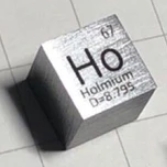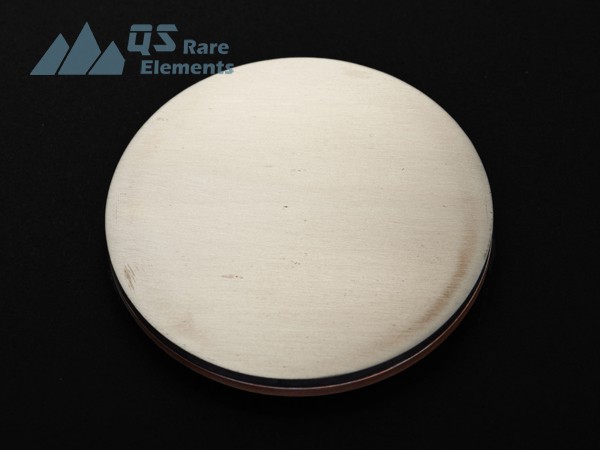Rare Earth Holmium Applications
Overview
 The rare earth metal holmium, symbolized as Ho,
appears as a shiny, malleable silver-white element. Notably volatile and soft,
holmium was first discovered in 1878 by Jacques-Louis Soret and Marc Delafontaine
in Geneva. The Latin name "Holmia" refers to Stockholm, where much
rare earth research occurred. That same year, Swedish chemist Per Theodore
Cleve became the first to isolate elemental holmium from erbium and thulium
mixtures. Using fractional crystallization, Cleve skillfully separated
holmium's distinct compounds. Today, we know holmium as a reactive earth metal
forming highly magnetic, colored compounds useful in optics and laser
technologies. For example, holmium oxide provides the yellow filters utilized
in optics systems. Furthermore, trivalent holmium ions produce the sharp red
wavelengths in Ho:YAG lasers, applied in medical procedures like lithotripsy.
Overall, holmium’s unique chemical and magnetic properties, uncovered by early
pioneering researchers, enable many crucial high-tech applications today.
The rare earth metal holmium, symbolized as Ho,
appears as a shiny, malleable silver-white element. Notably volatile and soft,
holmium was first discovered in 1878 by Jacques-Louis Soret and Marc Delafontaine
in Geneva. The Latin name "Holmia" refers to Stockholm, where much
rare earth research occurred. That same year, Swedish chemist Per Theodore
Cleve became the first to isolate elemental holmium from erbium and thulium
mixtures. Using fractional crystallization, Cleve skillfully separated
holmium's distinct compounds. Today, we know holmium as a reactive earth metal
forming highly magnetic, colored compounds useful in optics and laser
technologies. For example, holmium oxide provides the yellow filters utilized
in optics systems. Furthermore, trivalent holmium ions produce the sharp red
wavelengths in Ho:YAG lasers, applied in medical procedures like lithotripsy.
Overall, holmium’s unique chemical and magnetic properties, uncovered by early
pioneering researchers, enable many crucial high-tech applications today.
Given its high reactivity, holmium rarely occurs naturally in pure elemental form. Instead, trace amounts between 0.7-1.2 ppm reside fused within rarer minerals like monazite, gadolinite and thulium. The top producers actively mine holmium worldwide in China, Sri Lanka, the United States, and Brazil. However, holmium's scarcity still categorizes it among the least abundant rare earth elements. Therefore, isolation facilities must process tons of ores to yield kilograms of holmium compounds. These are then reduced to produce pure holmium metal. While costly, holmium's unique magnetic and optical properties make it indispensable for specialized magnets, lasers, and colorants. So despite the challenges of holmium's rarity, its distinctive capabilities continue to drive extraction and applications today.
With just one naturally occurring isotope, holmium's rarity extends to its nuclear properties. However, scientists have synthesized 35 radioisotopes of the element. Of these, the most stable is 168Ho, possessing a remarkably long 4570-year half-life. The other holmium radioisotopes exhibit far shorter half-lives, decaying within approximately one day. Nuclear facilities actively produce specific holmium isotopes like 166Ho, which emits high energy gamma rays used in cancer radiotherapy. Overall, while only one holmium isotope appears naturally, artificial production allows scientists to apply holmium’s unique nuclear qualities in valuable medical treatments.
Properties
Holmium shares many traits with its rare earth counterparts, yet displays distinctive attributes enabling key technologies. Like other lanthanides, holmium reacts readily to form colored compounds used in optics. However, holmium uniquely produces laser wavelengths for precise medical procedures. Additionally, holmium compounds contribute the yellow tints utilized in specialized glassware. Furthermore, holmium alloys create strong magnets for devices. Therefore, while holmium possesses some typical rare earth qualities, its singular magnetic, optical, and catalytic properties facilitate applications across industries like electronics, medicine, and manufacturing.
Holmium displays a striking bright silver coloration. However, it takes on a yellow tint under natural light and pink hue under fluorescent lighting due to electron excitations. Though shiny when polished, holmium actively oxidizes in air to form a yellowish coating. In addition to its optical effects, holmium crystallizes in a hexagonal close-packed structure. This grants holmium malleability for rolling into sheets or drawing into wires. Furthermore, holmium's lattice allows easy doping with other elements to produce desired properties. For example, trivalent ytterbium and thulium ions substitute for holmium in specialized laser crystals. Overall, holmium's color variations and crystalline structure facilitate applications from pigments to high-powered magnets and lasers.
Under standard conditions, holmium stably exists as a solid metal. However, when heated, holmium transitions from solid to liquid state at 1734 K. Further increasing temperature to 2873 K vaporizes the element. Additionally, holmium displays density changes between phases. Its tightly-packed crystalline structure produces a density of 8.79 g/cm3. But upon melting, with atoms free to move, density decreases to 8.34 g/cm3. Moreover, holmium actively interacts with water and acids. This high reactivity requires protected storage to prevent reaction. Overall, holmium’s defined melting point, density variations, and chemical reactivity stem from its position among the reactive rare earth metals, necessitating specialized handling but enabling unique capabilities.
Residing in period 6 and the f-block, holmium is categorized among the reactive rare earth metals. With 2 valence electrons, holmium readily forms compounds, often displaying vivid colors. For instance, it actively reacts with water to generate holmium hydroxide and with oxygen to produce yellow holmium(III) oxide. Additionally, when combined with halogens like chlorine, bromine, and iodine, holmium forms yellowish halide compounds. However, reaction with fluorine uniquely yields a pinkish halide. Furthermore, holmium exhibits versatile magnetism. Typically paramagnetic, cooling holmium below 19K induces ferromagnetism, the highest magnetism of any element. This allows holmium alloys to serve as strong permanent magnets. Overall, holmium’s defined position grants reactive, magnetic, and optical properties that enable uses from pigments to high-powered magnets, highlighting holmium as a crucial technological rare earth.
Applications
Lasers - Holmium is used in holmium-doped YAG lasers that emit very precise red wavelengths utilized for medical procedures like kidney stone lithotripsy, tumor treatment, and cosmetic skin resurfacing.
Magnets - Holmium alloys with cobalt and iron to create strong rare earth magnets for motors, generators, scientific equipment, and medical devices.
Glass Coloring - Holmium oxide imparts yellow tints to specialized glass used in certain optical instruments and filters.
Thin-Film Coating - Holmium sputtering targets and Holmium evaporation materials are used in deposition processes including semiconductor deposition, chemical vapor deposition (CVD) and physical vapor deposition (PVD).
Optics - Holmium YAG crystals assist q-switching in commercial lasers and holmium glasses filter infrared light.
Cancer Radiotherapy - The radioactive isotope 166Ho is produced for cancer brachytherapy and radiopharmaceuticals.
Alloys - Small amounts of holmium improve the workability and heat resistance of gadolinium and other rare earth alloys.
Catalysts - Holmium oxides provide highly active catalysts for chemical processing applications.
Research - Holmium's magnetic properties are useful in physics research on rare earth magnetism and supercooling.
In summary, holmium's unique optical, magnetic, and chemical capabilities enable numerous specialized high-tech applications, especially for lasers and magnets where it provides essential performance.

Holmium sputter target
Conclusion
Though scarce in Earth's crust, the rare earth metal holmium possesses unique physical and chemical properties that enable applications across diverse industries. For instance, holmium's unparalleled magnetic strength facilitates its use in high-powered magnets, while its distinctive optical activity allows specialized lasers and colored glasses. Furthermore, holmium's atoms readily substitute into the lattices of other rare earth metals, improving their workability and heat resistance when alloyed. However, holmium's rarity does limit its large-scale use. Nevertheless, researchers continue investigating innovative holmium applications, as its singular capabilities remain irreplaceable for certain advanced technologies and materials.
